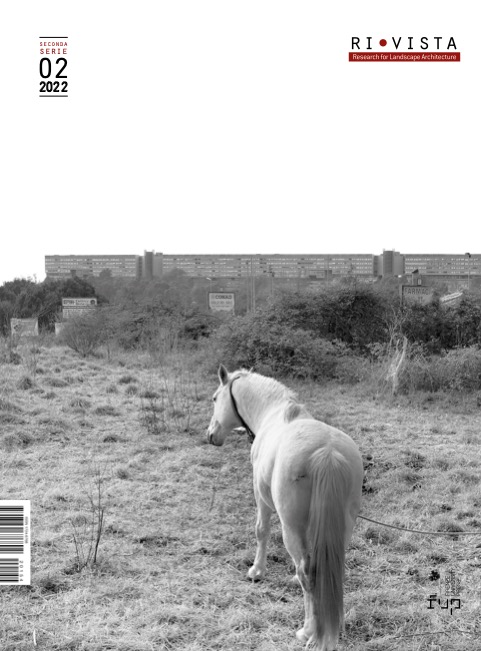Published 2023-02-23
Keywords
- co-evolution,
- nature vs culture,
- action and feedback,
- dynamisms,
- landscape design
How to Cite
Abstract
The term co-evolution forces us to reflect on the transformation of the meaning of some terms, linked to the profound changes of our time and very relevant for the design disciplines.
Starting from the role that some relational models have had within the landscape project up to the uncertain relationships that the project maintains with contemporary landscapes, this essay deals with dynamic interweaving of lines and nodes in continuous evolution, as suggested from Tim Ingold's metaphor.
The new landscapes require new interpretative references connected to the change in meaning of three main and constitutive terms of modern thought: nature, earth, evolution.
The great separation between 'nature and culture', which shows a disturbing permanence in our disciplinary field, has been outlined in the belief that it represents a serious obstacle to the start up of new explorations and imaginations.
Some hints on the Gaia Hypothesis follow, images of “forces in action” regulated by principles of reciprocity that has managed to defeat the idea of the planet as a sink, or a container. An idea that is rooted in modern thought, and which has made the boundaries between humans and non-humans increasingly blurred.
With respect to the themes of evolution, I mentioned the need to contrast the imaginary of Darwinian origin,-based on natural selection (harden over the last century without any responsibility of the great biologist!), in favor of collateral forms of change, creative strategies of survival that slip away the classical gradualism of evolution theories, synthetically recalling Gould's research.
In the second part of this editorial, I traced a possible interpretative geography of the contributions hosted in the issue, a map that overall appears very interesting for what it shows, and for what it hides. It is divided into 4 sections called: garden laboratories, resistances, dynamisms, reconciliations.
Finally, I have highlighted some key terms from the texts by Laura Boella and Kristina Hill that can be useful for drawing new maps, orienting our design explorations.






